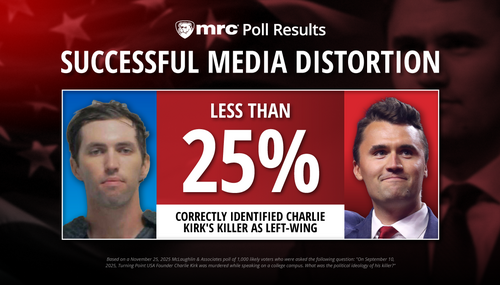The latest from New York Times reporter Kirk Semple on the front page of Tuesday’s Times, “Muslim Youth in U.S. Feel Strain of Suspicion,” demonstrates that the paper’s strongest impulse after Islamic terror attacks is not to investigate what went wrong, or how to stop a future attack, but instead to fret over perceived, anecdotal “Islamophobia” among their fellow citizens.
It’s much like his previous, anecdote-heavy, statistic-free “CAIR” package (as in Council on American-Islamic Relations) that Semple delivered in late November, an article completely dominated by CAIR sources in which Semple quite comfortably accused his fellow Americans of Islamophobia on the basis of anecdotes.
A front-page photo accompanying the article, of a student using a laptop as Donald Trump looms on a TV in the background, found the presidential candidate beneath mention. The caption: “Hebh Jamal, 15, not paying attention to what was on TV at her home in the Bronx, has dealt with anti-Muslim sentiment.” A quote from Jamal was also the paper’s “Quotation of the Day.”
Hebh Jamal does not remember the Sept. 11 attacks. She was 1. Growing up in the Bronx, she was unaware of the invasions of Afghanistan and Iraq and was mostly insulated from the surge in suspicion that engulfed Muslims in the United States, the programs of police surveillance and the rise in bias attacks.
But in the past year, especially in the past several months, as her emergence from childhood into young womanhood has coincided with the violent spread of the Islamic State and a surge in Islamophobia, she has had to confront some harsh challenges of being a young Muslim in America.
Instead of occupying herself with a teenager’s normal concerns, like homework, clothes and hanging out with friends, she said, she has had to contend with growing anti-Muslim sentiment, adjusting her routines to avoid attacks and worrying about how she appears to the rest of society. And she has repeatedly felt compelled to justify her faith and to distance herself from terrorists who murder in the name of her religion.
....
Ms. Jamal is part of a generation of Muslim Americans who have grown up amid the fight against terrorism, in an America in which anti-Muslim hostility, by many measures, has been historically high.
As he did in November, Semple ignored actual statistics that show “hate crimes” against Jews are historically committed at far higher rates. According to the FBI's most recent Hate Crimes Statistics, by far most incidents of "anti-religious hate crimes" involve attacks on Jews: “60.3 percent were victims of crimes motivated by their offenders’ anti-Jewish bias....13.7 percent were victims of anti-Islamic (Muslim) bias...6.1 percent were victims of anti-Catholic bias.”
Young Muslim Americans, on top of the usual trials of adolescence, have been forced to grapple with profound questions of identity, society, politics and faith in a country that has had an ambivalent relationship with Islam. The complexities and pressure have left many young Muslims feeling isolated and alienated, if not unwelcome in their own country.
Semple lumped in mass murders by Islamic radicals with a killing of three Muslims (the motive for those neighbor killings remains muddled) and a Donald Trump immigration proposal.
These challenges have only multiplied in the past year as violent events around the world have fueled or reaffirmed anti-Muslim feelings in the United States and elsewhere: the terrorist attacks in Paris; the killings of three Muslim students in Chapel Hill, N.C.; the San Bernardino, Calif., killings; and Donald J. Trump’s proposal to block the entry of all Muslims into the United States.
The hip liberal term “micro-aggressions” made a cameo:
“If a Muslim hasn’t been called a terrorist in middle school, lower school or high school, then they’re probably in a really great school -- and I’m happy for them!” Ms. Jamal said.
“I remember seeing micro-aggressions that my mom faced because she wore a hijab,” said Jensine Raihan, 17, a student at Townsend Harris High School in Queens. She, too, wore a head scarf when she was younger, but after enduring “weird” looks and treatment that she attributed in part to the garment, she took it off. “I didn’t feel comfortable anymore,” she said.
Semple linked Muslim activism to other left-wing “grievance” causes.
Young Muslim Americans are finding support and resolve in Muslim student clubs in high schools and colleges, and at mosques and Islamic youth centers. On college campuses, Muslim activists are building coalitions with other social action movements -- like Black Lives Matter -- to address shared grievances of inequality and prejudice.
In the years after Sept. 11, many Muslim Americans who were coming of age experienced a civic awakening in the crucible of the backlash, a trend charted in academic research. The trend has continued among the youngest Muslim Americans, as events and discourse, amplified by social media, compel them to wrestle with weighty social and political questions.
Speaking out against terrorism among their fellow Muslims does not seem to be among those “weighty...questions,” judging from Semple’s article.
Unusually, the Times comment section for the article was relatively unsympathetic, with readers pointing out that head-scarves are not mandatory in Islam but are merely tradition, and that walking down the street can be an uncomfortable experience for women in Saudi Arabia and Iran as well.




